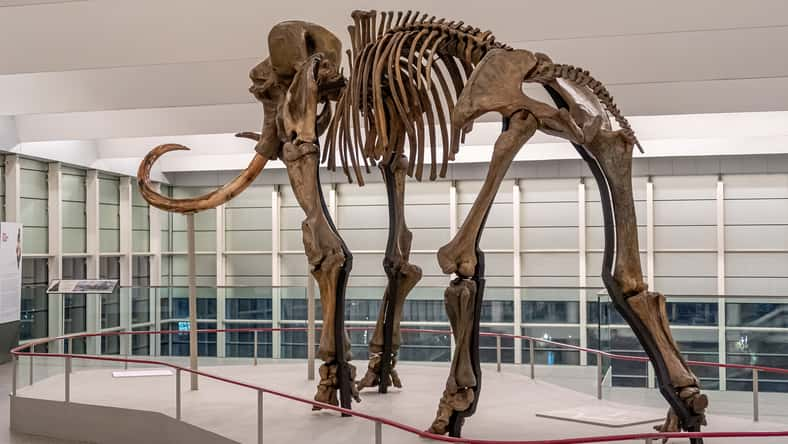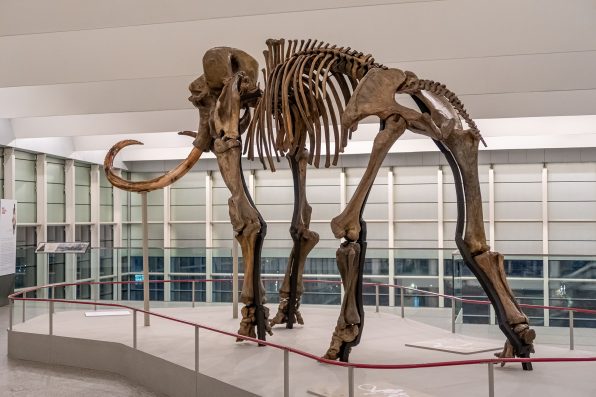Pollen Allergies May Have Been A Factor That Drove Woolly Mammoths To Extinction

At the end of the last ice age, a spike in the growth of vegetation may have created so much pollen that woolly mammoths were driven to extinction.
The mammoths possibly suffered from pollen allergies, which inhibited their sense of smell—a crucial form of communication for the creatures.
Global warming caused more vegetation to grow, triggering an increase in pollen. Allergies from the pollen may have prevented the mammoths from sniffing each other during the breeding season. This would’ve led to a decrease in the mammoth population and, eventually, extinction.
“One of the possible mechanisms for the extinction of animals during climate change could be a violation of the sense of smell due to the development of allergies when the flora changes,” wrote the researchers in charge of the study.
“The purpose of this work is to propose a new evolutionary mechanism for the extinction of mammoths and other animals based on the disruption of communication.”
Woolly mammoths lived during the Pleistocene epoch, which occurred 2.6 million to 11,700 years ago.
Around 10,000 years ago, they disappeared, although a small group persisted on the remote Wrangel Island located off of northeastern Russia until 4,000 years ago.
It is thought that a combination of inbreeding, being hunted by humans, and significant shifts in vegetation all drove the mammoths to extinction.
However, the extent to which each factor contributed to the species’ demise is heavily debated among experts.

LFRabanedo – stock.adobe.com – illustrative purposes only
The researchers from the recent study argued that allergies would have interfered with several aspects of the mammoth lifestyle.
The mammoths used their sense of smell to find food and mates, to avoid predators, and to navigate migration routes. Therefore, their stuffy trunks aided in their downfall.
By examining mammoths’ stomach contents for plants and pollen that trigger allergies, the researchers can test if mammoths suffered from allergies.
Some carcasses have preserved traces of pollen or plant material that could help identify any allergy sources.
They also suggested looking for the immune system proteins the body produces when it’s experiencing an allergic reaction. One of the main proteins is immunoglobulin E (IgE), which is produced in the intestine.
So, testing fossilized mammoth feces could help determine if the mammoths had allergies. Currently, no published research has investigated ancient mammoth samples for traces of IgE.
Ancient DNA samples have indicated that the last woolly mammoths lost their ability to smell certain plants.
When the genome of a mammoth from Wrangel Island was reconstructed, it showed genetic mutations associated with the ability to smell floral scents.
Overall, the evidence hints at allergies being another factor that pushed the mammoths to extinction. Further research is needed to test the idea.
The study was published in the journal Earth History and Biodiversity.
Sign up for Chip Chick’s newsletter and get stories like this delivered to your inbox.
More About:News





